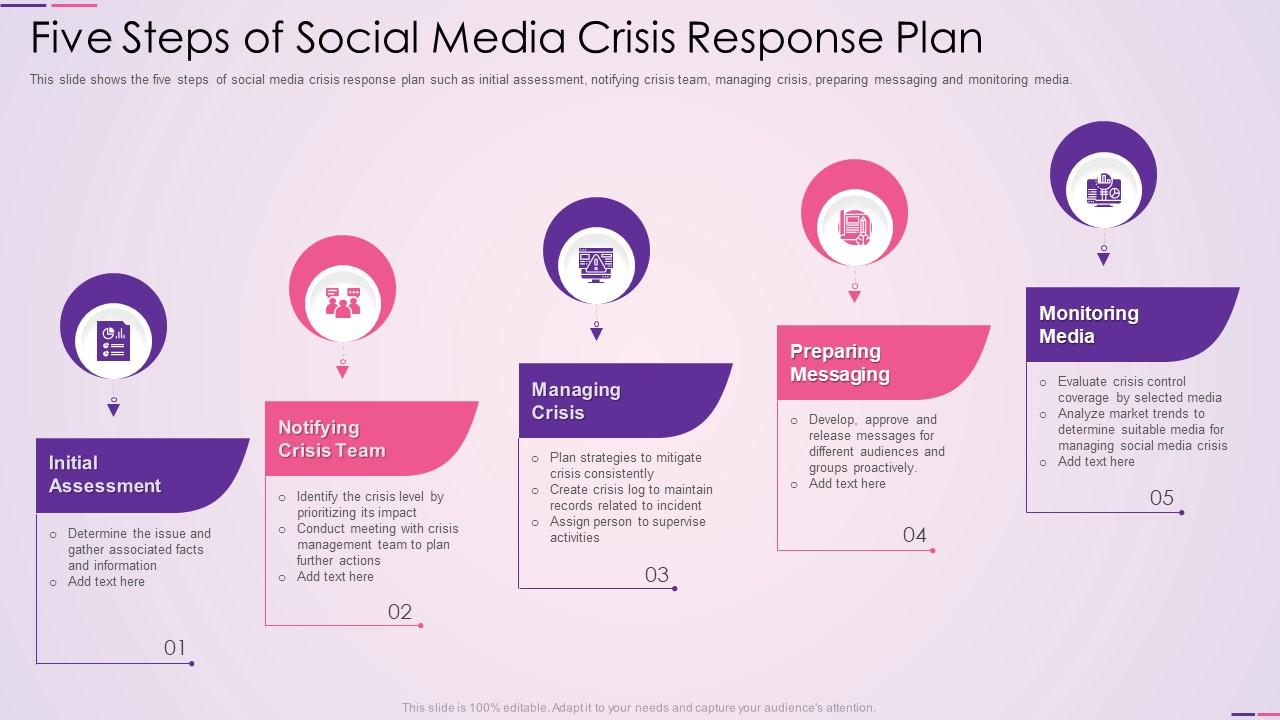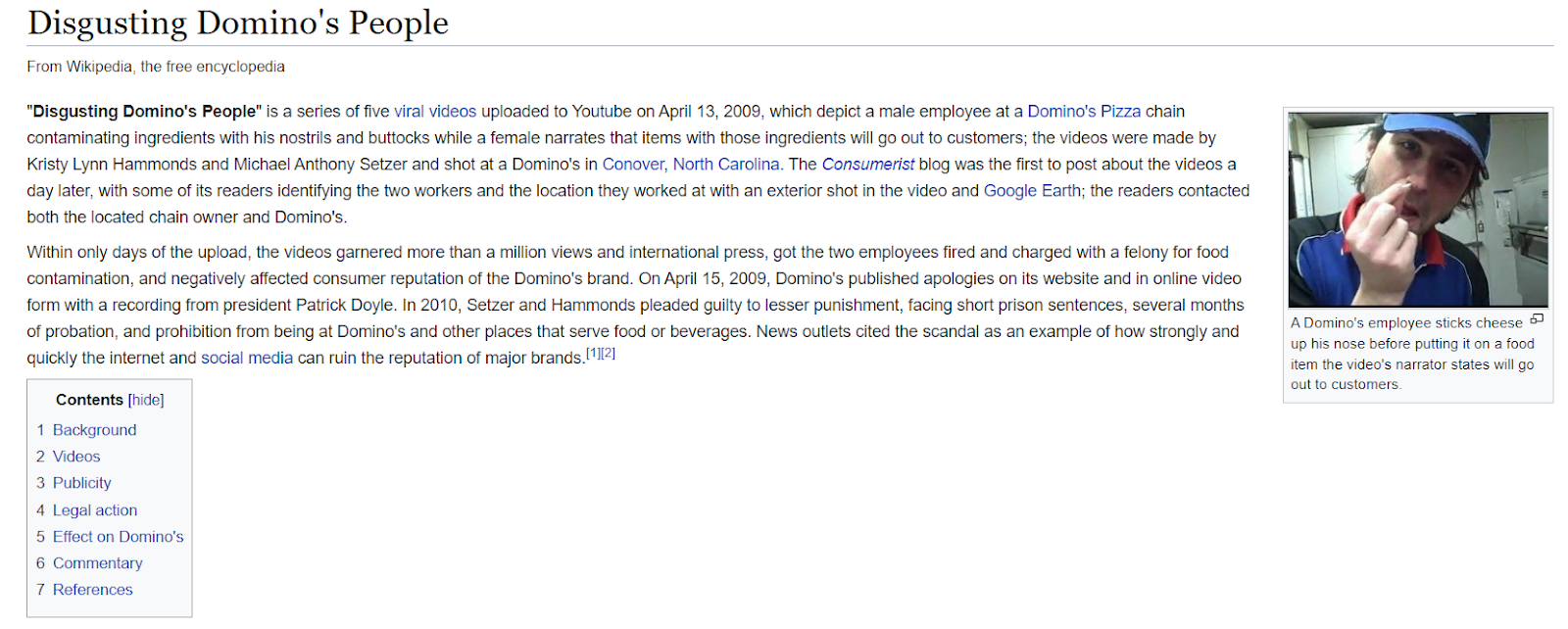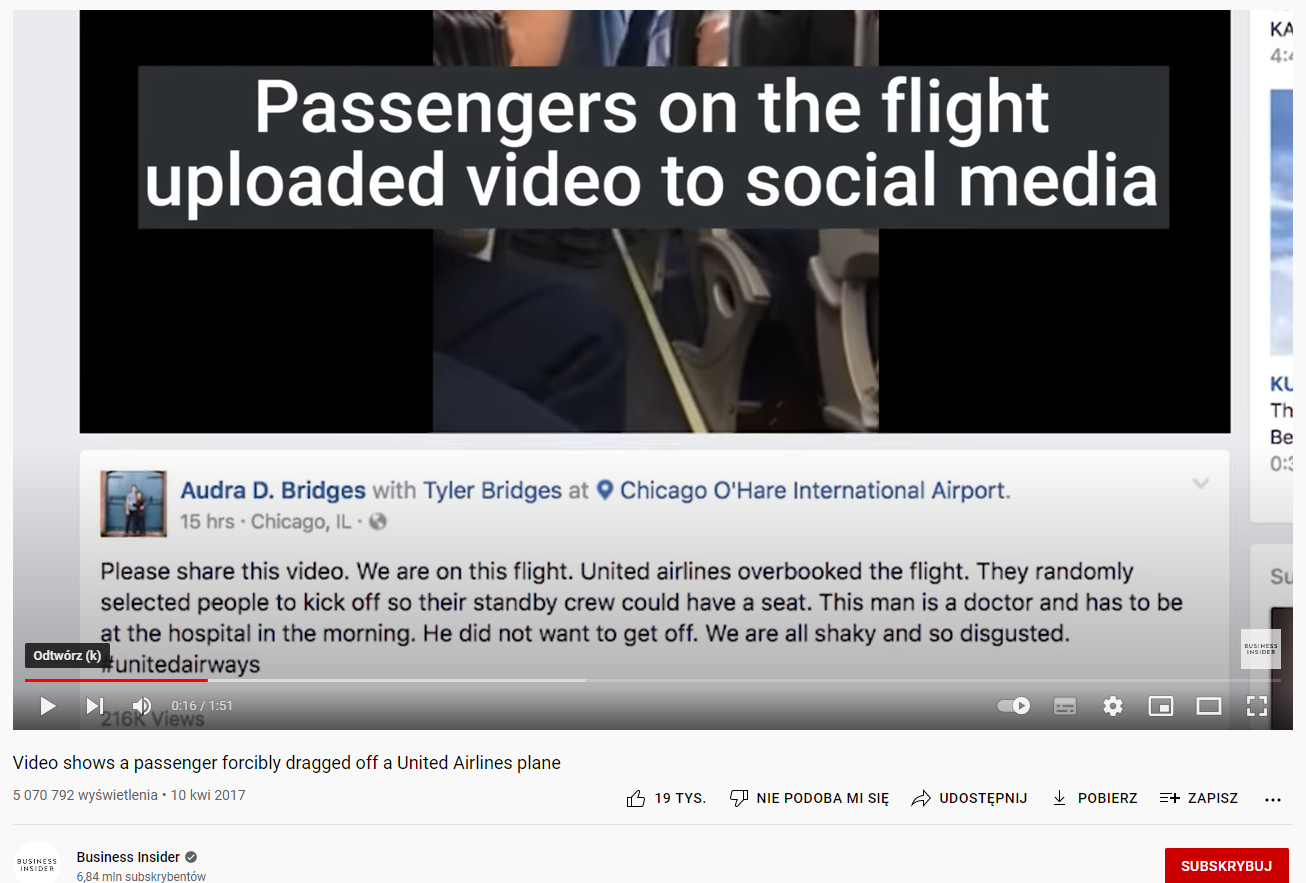
Social media has become a part of our lives. We use it to connect with friends and family, to get the latest news, or even to shop. It’s a place where we can share our thoughts and feelings with people, also as brands.
But social media is also a place where crises can happen almost like natural disasters.
These crises can be triggered for various reasons and they usually escalate quickly, often damaging brands’ reputations. With the damaging power they hold, it’s vital that brand managers and PR specialists from the social team know how to deal with them.
So in today’s article, we explore how you should and shouldn’t approach social media crisis management and what your crisis communication plan should include.
In business, crisis management is the process of dealing with an emergency situation that could damage the reputation or financial stability of a company. It is a form of risk management that aims to prevent crises from happening, reduce their impact if they do happen, and restore any lost trust.
Social media crises can be classified into several types. We distinguish 4 different ones:
Social media and crisis management have become a natural phenomenon.
It's not a question of IF, but WHEN the next crisis will happen.
If you are in charge of managing your company's public image and reputation on social media, you need to know how to prepare yourself for when it comes. In other words, you need a crisis plan.
Below, we share a list of the things you should and shouldn’t do to make crisis management efforts easier for you.
Your social media strategy must include straightforward community rules if you want to avoid a crisis in the first place.
This way, you can show your audience that your brand’s social media profile is the perfect spot for them to be in: with no negativity involved that would put them off.
By introducing these rules, you also protect your audience from things like online hate and discrimination as a brand exposed that is exposed to public opinions.
Having these policies implemented makes it easier for you to block somebody or report a comment if there’s ever a need to do that. At the same time you’re nipping a potential crisis right in the bud. Win-win, right?

In case of a social media crisis, you should always be monitoring closely what's happening online, especially around your brand.
You should also pay attention to the sentiment on social media channels and gather feedback from the customers.
There are 3 main reasons why it's important to do it:
- you get an idea of how people are feeling about your brand,
- you find out if you're trending or not,
- you know if there is any misinformation that needs to be corrected.
One of the ways of staying up to date with various channels is using social media monitoring tools. A reliable one will definitely have a special feature allowing you to access all the places of engagement with your brands from one place. This way you don’t need to jump between different profiles.

As we’ve mentioned before, crises on social media are a matter of when, not if. So to be able to deal with them in the best way, your PR and brand managers must plan and practice in advance. This is when you need to develop a crisis communication plan.
By doing it, when a crisis actually comes, they’ll be less surprised and taken off guard.
How to create an effective crisis management plan?
Such preparation will be highly beneficial when the not-so-great time comes.

Another thing to remember is that social media never sleeps. Some brands learn it the hard way, for example when they don’t appoint anybody to monitor their pages during weekends or holidays.
In a fast-moving environment like social media, it’s vital that you respond to situations fairly quickly. Staying silent for too long may look like you’re trying to sweep a crisis under the carpet.
At least that’s what it looked like when a popular fast food chain Domino’s faced a “Disgusting Domino’s People” crisis on social media back in 2009.

It took them a few days before they addressed a series of viral (joke) social media posts demonstrating how their food is prepared in the kitchen. This behavior left a bad aftertaste as it showed a lack of interest and care from the brand.
However, it can be somehow justified as the company had only assembled a new social media team a month before the whole disastrous situation. In this case, they probably didn't manage to prepare a social media crisis communication plan of action on time.
Either way, try to avoid such behavior.
“If you think it’s not going to spread, that’s when it gets bigger,” - Scott Hoffman, the CMO of Lotame, a social media marketing firm.
When dealing with many hateful comments on social media all at once, you might get tempted to “get rid of the problem” by deleting comments or blocking their authors from interacting with your page.
Do not do it (just like Jessica Mercedes did when people found out her clothes weren’t actually made in Poland and instead had Fruit of the Loom tags on them).

A behavior like this can only backfire and the negative comments will come back 2 times stronger.
Instead, let them stay on the profile (as long as they’re not breaking your community guidelines or the platform’s terms of use) and think about a response. It’s much better to communicate with people instead of shutting their voices down. In the meantime, you need to think of a crisis plan as quickly as possible.
Another thing you should avoid when preparing your social media crisis response is making rushed decisions.
The first thing you should do instead is take a deep breath. It may seem like the world is crashing down around you, but it's not. You have time to think about what you are going to say and how you are going to handle this emergency management.
Something that should immediately go through your mind when something goes wrong is: "What can I do now?".
If you don’t ask yourself this question, you may end up getting even more criticism for your emergency response. That’s what happened with United Airlines in 2017. Their response to the viral video showing staff dragging a passenger out of an overbooked aircraft didn’t meet with optimism.

When you make rushed decisions, it’s often your emotions being your advisor. And a media crisis is not the time and place for emotions to be involved.
Social media has become a major part of the way we communicate and stay connected with each other. However, it can also be a major source of potential problems for businesses, like you just saw.
This is why prevention is so important - it's much easier to stop a problem before it becomes one or escalates to a huge size. But how can you do this? There are many crisis management tools that can help you.
For example, it’s worth using a social media management solution that could make it easy for you to monitor your profiles from one place. This way, you’ll never miss anything important.
One of these solutions is FeedHive - the ultimate software for social media use, great for social media managers and more.

Here’s 3 reasons why your marketing team should try it out:
So try it out today and never look back at the old way of dealing with your social media profiles during a crisis.
Now that you know the green and red flags of social media crisis management, you’re more likely to handle your crisis communication strategy well.
Let’s make a quick recap of what your crisis communication plan should include:
… and what it shouldn’t:
This is all it takes for you to deal with a disaster on social media like a professional.
We hope you enjoyed this article and if you did - be sure to come back for future blog posts.
Other than that, many thanks for your attention and best of luck with your crisis management on social media!